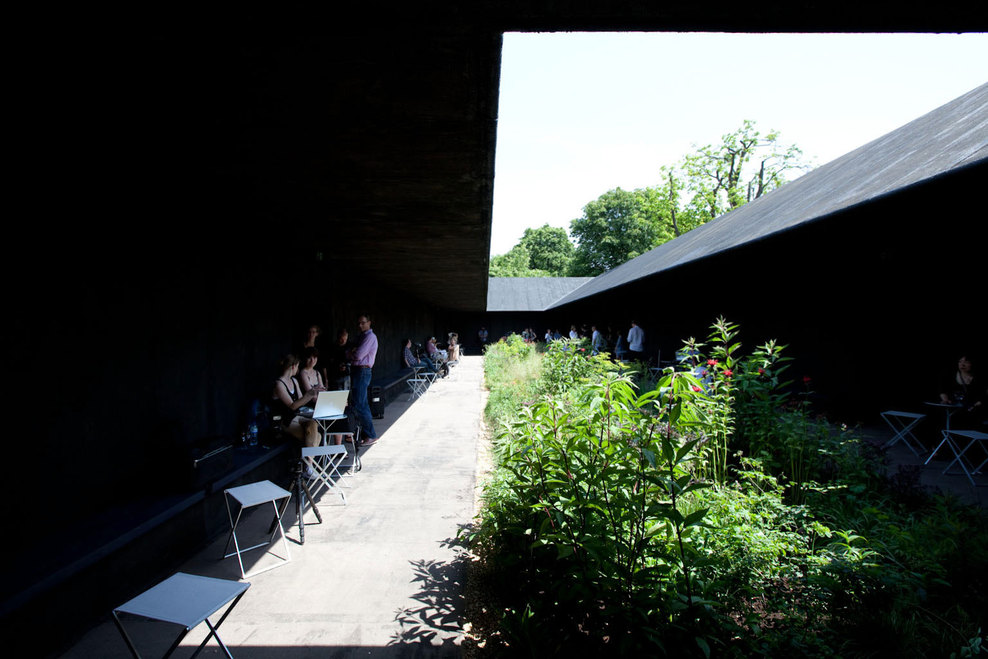

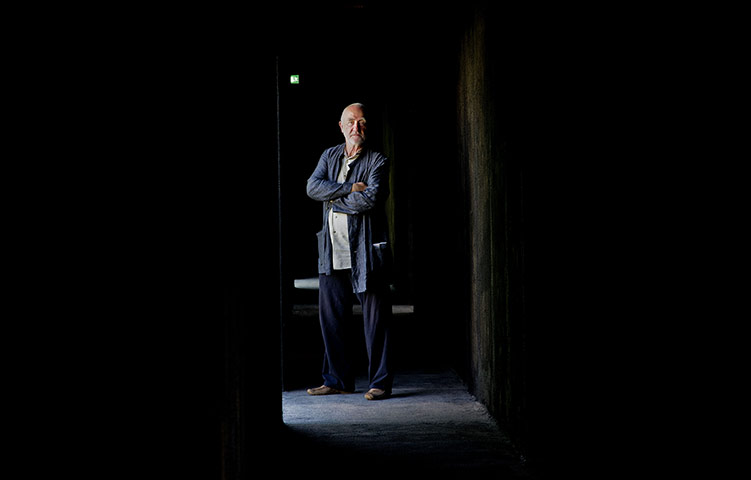
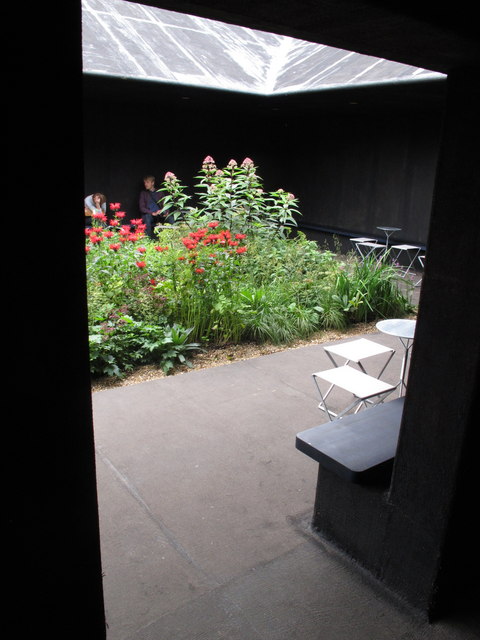
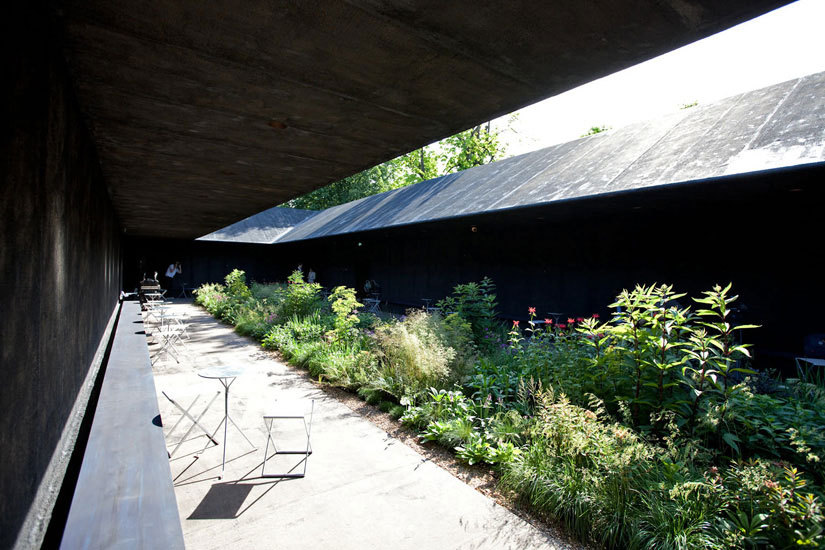


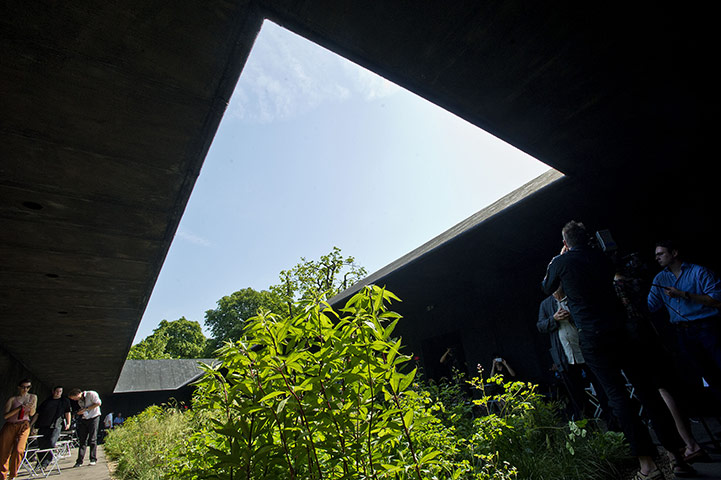


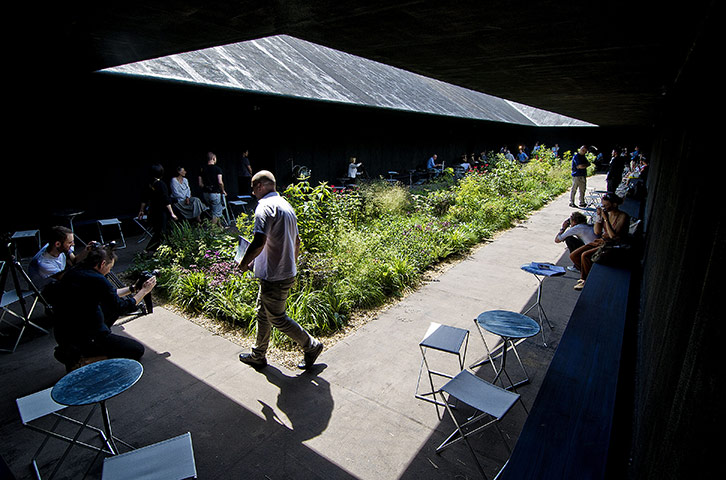


Ogni estate, alla Serpentine Gallery in Kensington Gardens, si svela un nuovo padiglione costruito da un noto architetto, progettato per durare per soli tre mesi. Questo avveninmento d'avanguardia è un must nel calendario londinese. Il Padiglione del 2011 è stato progettato dal famoso architetto svizzero Peter Zumthor e rappresenta il programma molto ambizioso: l' edificio, il primo completato dall'architetto nel Regno Unito, comprenderà un giardino appositamente creato dal noto designer olandese Piet Oudolf. Secondo l'architetto svizzero, il giardino ispirerà i visitatori a trasformarsi in osservatori e aiutarli così a rilassarsi, per osservare e poi, forse, iniziare a parlare di nuovo: il design dovrebbe sottolineare il ruolo dei sensi e le emozioni che entrano in gioco nella nostra esperienza dell'architettura. Con una raffinata selezione di materiali Zumthor crea spazi contemplativi che evocano la dimensione spirituale del nostro ambiente fisico. Come sempre, l'obiettivo estetico di Zumthor è quello di personalizzare il proprio edificio in modo che si trasformi in un oggetto di esperienza emozionale. Zumthor ha dichiarato che il concetto per il Padiglione di quest'anno è l'hortus conclusus, una stanza contemplativa, un giardino all'interno di un giardino. L'edificio agisce come un palcoscenico, uno sfondo per il giardino interno fatto di di fiori e di luce. Attraverso il buio e l'ombra si entra nell'edificio dal prato e inizia la transizione verso il giardino centrale, un luogo separato dal mondo e dal rumore e del traffico e dagli odori di Londra - uno spazio interno in cui sedersi, camminare, osservare i fiori. Questa esperienza sarà intensa e memorabile, così come le stesse materie -. 'Atmosfera carica di memoria e di tempo è importante per Zumthor, e la sua architettura cerca di coinvolgere i sensi. Ma in questo edificio apparentemente semplice che ha strappato via tutti i dettagli che distraggono. Il colore è costituito da una sola panchina di vivido blu posta attorno ai quattro lati. Tutti gli occhi saranno puntati sulle piante - e il processo di contemplazione potrà iniziare. "Zumthor prevedeva una zona molto aperta, un giardino soleggiato all'interno di quello che è uno spazio molto chiusoin quello che è molto chiuso, dice Oudolf. "Ho dovuto spiegargli che l'intervento sarebbe stato più adatto per la parete nord dell'edificio, come al bordo di un bosco." Ho immaginato un luogo che evochi il sogno, dove ci si perde e si scopra qualcosa di naturale, selvaggio ", dice. "Cerco sagome e testure, piante che siano interessanti prima della fioritura." Rossi profondi, come la Astrantia 'Claret' e Monarda 'Jacob Cline' sono un suo must, perchè il colore tende ad essere un po 'scioccante, un'articolazione di qualcosa di primitivo. Non troppo, solo un po 'di punteggiatura ottiene l'attenzione. Graminacee trasparenti come la Molinia contribuiscono a dare un effetto complessivo morbido e sfumato, favorevole allo stato di sogno ad occhi aperti che si vuole creare. Il desideri di Oudolf è che i visitatori vedano che l'architettura è semplice e la piantumazione complessa perchè l'osservazione delle piante stimola un pensiero diverso, connesso al nostro spazio interiore: questo è ciò che è un hortus conclusus, uno spazio semplice e contemporanemaente complesso / Every summer, the Serpentine Gallery in Kensington Gardens unveils a new pavilion built by a renowned architect, designed to stand for just three months. This avant-garde happening is a high point in London’s calendar. The Serpentine Gallery Pavilion 2011 is designed by world-renowned Swiss architect Peter Zumthor. This year’s Pavilion is the 11th commission in the Gallery’s annual series, the world’s first and most ambitious architectural programme of its kind. It is the architect’s first completed building in the UK and includes a specially created garden by the influential Dutch designer Piet Oudolf. At the heart of Peter Zumthor’s Pavilion is a garden that the architect hopes will inspire visitors to become observers. Zumthor says his design ‘aims to help its audience take the time to relax, to observe and then, perhaps, start to talk again – maybe not.’ The design emphasises the role the senses and emotions play in our experience of architecture. With a refined selection of materials Zumthor creates contemplative spaces that evoke the spiritual dimension of our physical environment. As always, Zumthor’s aesthetic goal is to customise the building precisely to its purpose as a physical body and an object of emotional experience. Zumthor has stated that ‘the concept for this year’s Pavilion is the hortus conclusus, a contemplative room, a garden within a garden. The building acts as a stage, a backdrop for the interior garden of flowers and light. Through blackness and shadow one enters the building from the lawn and begins the transition into the central garden, a place abstracted from the world of noise and traffic and the smells of London – an interior space within which to sit, to walk, to observe the flowers. This experience will be intense and memorable, as will the materials themselves – full of memory and time.’ Atmosphere is important to Zumthor, and his architecture seeks to engage the senses. But in this deceptively simple building he has stripped away all distracting details. The only colour is a vivid blue bench around four sides. All eyes will be on the plants – and the process of contemplation can begin. “Zumthor envisaged a very open, sunny garden in what is a very enclosed, sheltered space,” says Oudolf. “I had to explain to him that I would make the planting better suited to the north face of a building, or a woodland edge.”
I imagined something to dream in, something loose and wild,” he says. “I look for silhouettes and textures, plants that look interesting before they are in flower.” Deep reds, as in Astrantia major 'Claret’ and Monarda 'Jacob Cline’ are a favourite of his: “This colour tends to be slightly shocking, an articulation of something primitive. Not too much, just a little punctuation gets attention.” Grasses such as Molinia 'Transparent’, keep the overall effect soft and hazy, conducive to the state of elevated daydreaming. “I want visitors to see that architecture is simple and planting is complex. Looking into plants brings you into another kind of thinking, connected with inner space. That’s what a hortus conclusus is for. It’s simple, in a complex way.”
Nessun commento:
Posta un commento